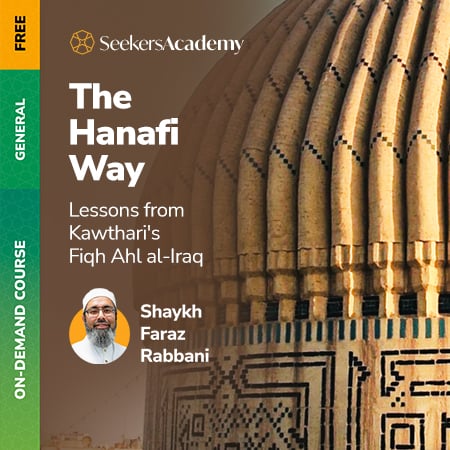
In these critical lessons, Shaykh Faraz Rabbani explores the legal and hadith methodology of the Hanafi school, through the lens of Imam Kawthari’s important work, The Fiqh of the People of Iraq and their Hadith (Fiqh Ahl al-`Iraq wa Hadithuhum).
This class offers insights on how the Hanafi imams viewed analogy (qiyas) and legal preference (istihsan), their interpretive principles relating to hadith—particularly their distinguishing between the decisive (qat`i) and the non-decisive (dhanni)—and other foundational principles of the Hanafi method.
Imam Kawthari shows how the Hanafi school traces itself to the “inherited sunna'' spread through the amazing educational vision of Umar ibn al-Khattab as Caliph, and Abd Allah ibn Mas`ud’s teaching, particularly in Kufa. (Allah be pleased with them).
It also looks at some of the notable figures of the Hanafi school and explores its fascinating history—how did the school become so prominent.
Shaykh Faraz also navigates through some misconceptions about the Hanafi school’s principles and methodology, making this class a critical resource for every student of the Hanafi school to understand and digest
- Teacher: Shaykh Faraz Rabbani
- This course is for adults.
- It is particularly beneficial for students of Islamic Law.
- Before taking this course, students are recommended to take Usul al-Fiqh: How Islamic Law is Derived and Interpreted: Halabi’s Mukhtasar al-Manar.
- This course can also be taken by anyone who is interested in understanding the legal and hadith method of the Hanafi school.
- Learn the method of the Hanafis in their fiqh.
- Understand the history of the Hanafi school.
- Understand how the Hanafis understood hadith.
- Understand how the Hanafis understood analogy (qiyas).
- Understand how the Hanafis understood legal preference (istihsan).
- Understand Imam Abu Hanifa’s method in teaching.